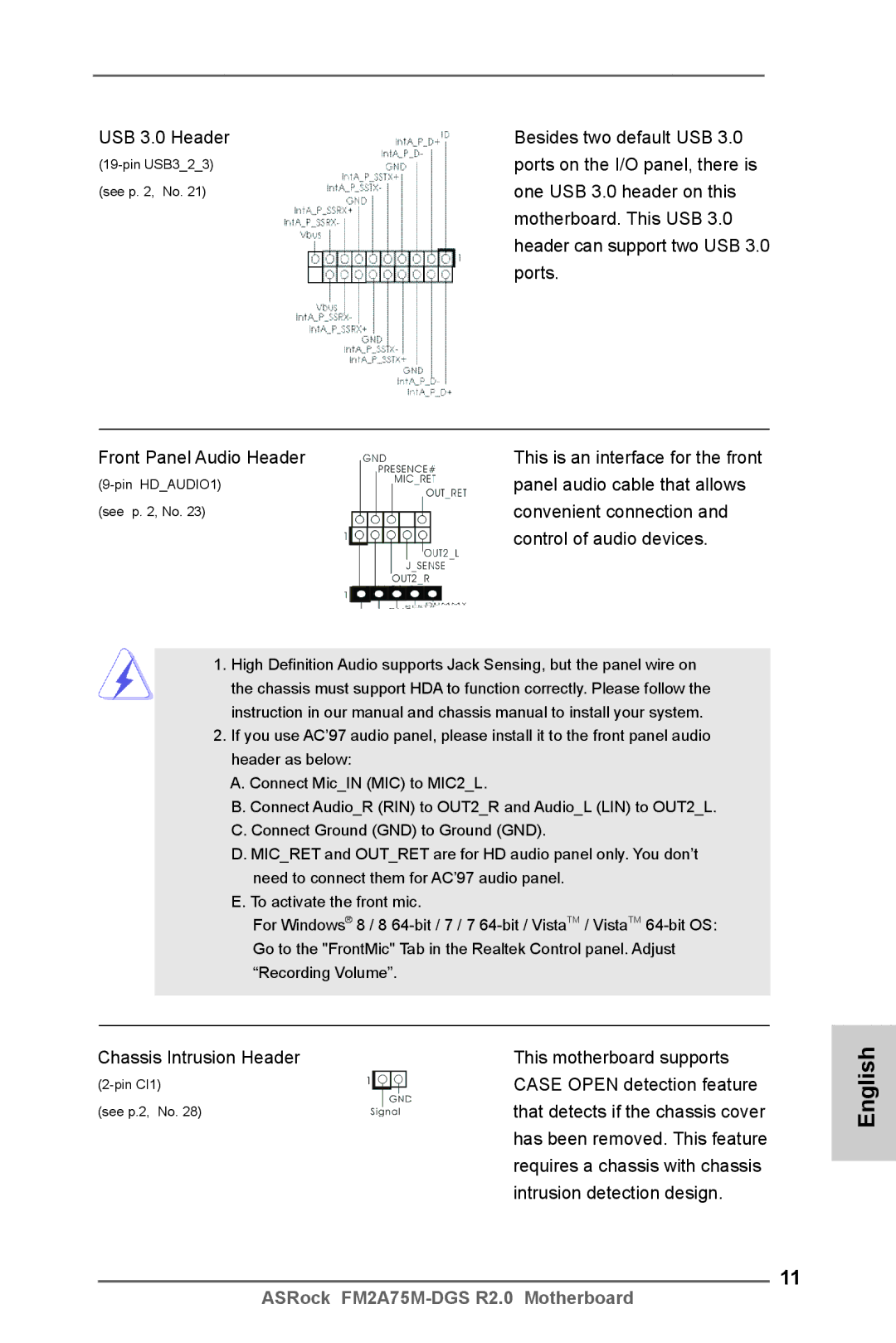FM2A75M-DGS R2.0 specifications
The ASRock FM2A75M-DGS R2.0 is a micro ATX motherboard designed for AMD's FM2 and FM2+ processors, making it an excellent choice for users looking to build a compact yet capable system. This motherboard offers a combination of performance, versatility, and affordability, suitable for budget-conscious gamers and general-purpose computing.One of the key features of the ASRock FM2A75M-DGS R2.0 is its support for Dual Channel DDR3 memory, accommodating up to 64GB across four DIMM slots. This allows for significant memory capacity and bandwidth, vital for gaming, graphic design, and multitasking. The motherboard supports memory speeds of up to 2400MHz when overclocked, ensuring that users can take full advantage of their RAM’s performance potential.
The motherboard features the A75 chipset, which supports AMD's latest A-Series APU technology. This technology combines the CPU and GPU on a single chip, offering fantastic integrated graphics performance that can handle most modern games at lower settings. The ASRock FM2A75M-DGS R2.0 offers HDMI and DVI-D outputs, which enable high-definition video output and make it easy to connect to today’s monitors and displays.
For storage, the FM2A75M-DGS R2.0 includes six SATA3 (6.0 Gb/s) ports that allow for fast data transfer rates. Users can set up RAID configurations for enhanced performance or redundancy, which is an important consideration for those handling large data files or gaming libraries.
In terms of connectivity, this motherboard comes with four USB 3.0 ports, providing significantly faster transfer rates compared to USB 2.0. This is particularly beneficial for users who frequently move large files or use high-speed external drives. Additionally, the ASRock FM2A75M-DGS R2.0 features a Gigabit Ethernet port, ensuring reliable and fast network connectivity, which is essential for online gaming and streaming.
Another notable characteristic of the FM2A75M-DGS R2.0 is its compact size, which allows it to fit into smaller cases without sacrificing performance or expandability. Despite its size, the board includes ample expansion options, with a PCIe 2.0 x16 slot for graphics cards, which is essential for gamers looking to upgrade their systems in the future.
Overall, the ASRock FM2A75M-DGS R2.0 is a versatile and feature-rich motherboard that delivers strong performance at an accessible price point. Its support for AMD's APU technology, extensive memory capabilities, and modern connectivity options make it a solid choice for anyone looking to build a reliable and efficient computer system.

